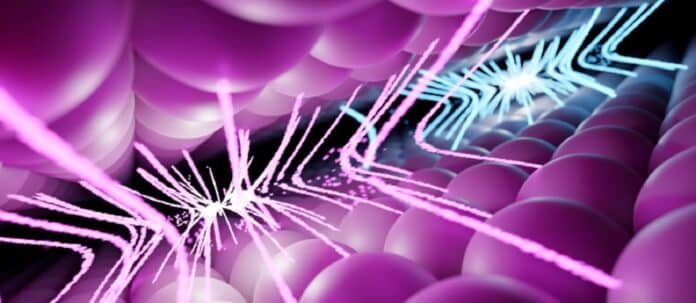Physical phenomena rooted in the geometry of electronic wavefunctions can be observed in quantum materials. The Berry curvature is an emergent field that characterizes the related geometric tensor.
An international team led by the University of Geneva (UNIGE) and includes researchers from Salerno, Utrecht, and Delft has created a material in which electron dynamics may be controlled by curving the fabric of space in which they evolve. Future optoelectronics, as well as next-generation electronic devices, are the application of this material.
The researchers created unique combinations of atoms in space that affect the material’s behavior using an advanced system for fabricating materials on an atomic scale. While technological applications are still a long way off, this material opens up new avenues in investigating very high-speed electromagnetic signal manipulation.
It can also be used to develop new sensors. The next step for the research team will be to observe how this material reacts to high electromagnetic frequencies to determine its potential applications more precisely.
Future telecommunications will require the development of new, incredibly powerful electronic devices capable of processing electromagnetic signals at previously unheard-of speeds in the picosecond range.
This is unimaginable with today’s semiconductor materials, such as silicon, widely used in electronic components such as phones, computers, and game consoles.
To do this, scientists and industry are concentrating on developing new quantum materials with unique properties that may be used to capture, alter, and transmit information-carrying signals.
They can also operate in previously unexplored electromagnetic frequency ranges, opening up possibilities for high-speed communication systems.
Carmine Ortix, professor at the University of Salerno and coordinator of the theoretical study, said, “We have designed an interface hosting an extremely thin layer of free electrons. It is sandwiched between strontium titanate and lanthanum aluminate, which are two insulating oxides,” This combination allows us to obtain particular electronic geometrical configurations which can be controlled on demand.
Andrea Caviglia, full professor at the Department of Quantum Matter Physics in the Faculty of Science of the UNIGE and the last author of the study, said, “One of the most fascinating properties of quantum matter is that electrons can evolve in a curved space. The force fields, due to this distortion of the space inhabited by the electrons, generate dynamics totally absent in conventional materials. This is an outstanding application of the principle of quantum superposition,”
Journal Reference:
- Lesne, Saǧlam, Battilomo, et al. Designing spin and orbital sources of Berry curvature at oxide interfaces. Nature Materials.DOI: 10.1038/s41563-023-01498-0
